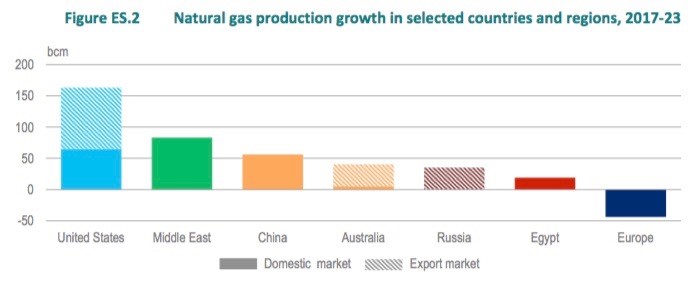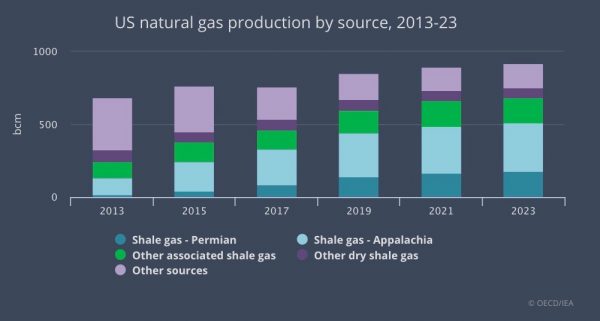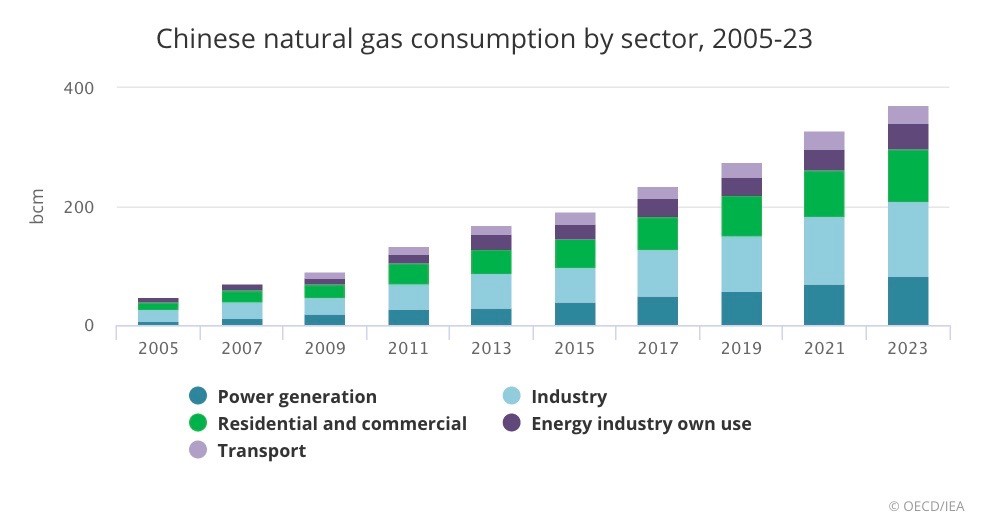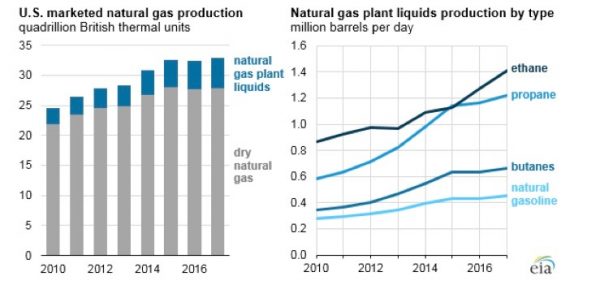 Thomas J. Pyle
Thomas J. Pyle
President of the American Energy Alliance
…
…
Thomas Pyle spoke at the Think About Energy briefing about the importance of a smart energy policy so the United States can be energy independent.
I don’t get out to Pennsylvania as much as I’d like, but when I do I always appreciate the warm welcome — and the good food — so thanks for inviting me today.
As was mentioned in the introduction, I proudly serve as the President of the Institute for Energy Research and our advocacy arm, the American Energy Alliance. Our mission is to be a principled and effective voice in the energy policy arena, mainly at the federal level, but increasingly at the state level as well.

We support the principles of the free market because those principles lead to the best outcomes for everyone. It is an indisputable fact that property rights, market exchange, and the rule of law — not central planning — has delivered affordable energy, improved living standards, AND a cleaner environment.
We also stand for government policies that are predictable, simple, and technology neutral. We don’t believe that the government should be in the business of picking winners and losers. Instead, the welfare of energy consumers, energy producers, and taxpayers should be considered equally to create limited, but smart, energy policy.
Energy isn’t just one facet of the economy, it’s the economy’s lifeblood, affecting agriculture, manufacturing, health care, transportation — nearly all aspects of our lives. And while we support all forms of energy, all forms of energy are not created equal.
Thirty years ago, just under 80% of the world’s total energy consumption came from three sources — oil, coal, and natural gas. Guess what that number is today. Just over 80%. These three sources form the backbone of our modern society, and will continue to do so for generations to come. That is why Pennsylvania, with its vast supplies of natural gas, is well positioned to be an economic force for good in the decades to come. Provided, of course, that the right policies remain in place.
Before I dive further into my views on Pennsylvania shale, I’d like to talk a little about what’s going on in Washington. Or at least round out what you’re not reading on Twitter. Following the 2016 election, I was given the opportunity to serve as the Transition Team leader for President-Elect Trump’s Department of Energy.
I, along with several of my transition colleagues, we were asked to assemble an energy policy blueprint for the President-elect. This blueprint, formally called Agency Action Plans, helped prepare the incoming administration to fulfill candidate Trump’s promise to usher in a new era of energy freedom.

In his first 500 days, the Trump administration has done a lot to restore some sanity in federal energy and environmental policy, and I’ve been honored to play a small part in helping make that a reality. Here is a short recap of some of those accomplishments.
500 Days of Trump
First off, the previous administration’s penchant for executive action has proved to be its undoing as President Trump has been able to swiftly rewrite national energy and environmental policy with his own pen and phone.
In sharp contrast with President Obama, Trump embraces our coal, oil, and natural gas resources. While perhaps not my favorite term, he has aggressively pursued an agenda of energy “dominance,” encouraging states to increase productivity by streamlining infrastructure permitting, getting rid of unnecessary and duplicative federal regulations, and reopening federal lands and waters to energy development.
And for the U.S. to be energy dominant is not just for bragging rights. As the richest energy nation in the world, we have and can continue to use those natural resources to create a strong economy and make life better for people here at home and around the world.
The president has executed most effectively on several transition blueprint items including: withdrawing from the Paris climate agreement, rescinding the so-called Clean Power Plan, immediately approving critical pipeline infrastructure, and a score of regulatory actions designed to right size the role of the federal government in energy production and environmental protection.
There are, of course, a few areas where we disagree with the President. And I’m limiting my comments to energy. For example, we oppose the Renewable Fuel Standard (standard of course being a Washington word for mandate, much like a fee is a Washington word for a tax). This has had a tremendous negative impact consumers and refinery workers including right here in Pennsylvania, as we saw with the PES refinery in Philadelphia.
We also disagree with his so far unsuccessful attempts to directly subsidize nuclear and coal power units. And his latest effort – linkng a subsidy to national security as part of the the Defense Production Act – might actually hold up in court if they ever figure out how to implement it.
But really, there is little else to complain about on the energy front in his first 500 days. And for good reason. For example, we strongly supported his decision to withdraw the U.S. from the Paris Agreement. As far as we can tell, there has been no downside to pulling out of that agreement.
We are already leading the pack when it comes to energy efficiency and our carbon emissions continue to drop even as those countries who remain in the pact are falling short of their less restrictive pledges. This is due, of course, in no small part to our increased use of natural gas.
The agreement was all pain and no gain for America. Not only in terms of stringent regulations, but also because we committed billions of taxpayer dollars to the accord’s “Green Climate Fund” which, by the way, Congress had little intention of funding.
You probably recall Trump’s notable line in his Paris withdrawal speech: “I was elected to represent the citizens of Pittsburgh, not Paris.” A cynical person would say that he was pandering to a swing state. And maybe that was a part of it, but I think he choose Pittsburgh instead of — say Peoria — for a different reason.
Pittsburgh represents to many Americans the era of robust, dynamic, industrial prowess. It was home to industry titans like Andrew Carnegie, Andrew Mellon, and Henry Clay Frick. And of course, there’s the Steelers. Growing up a Bills fan, I will forever remember the steel curtain, the terrible towel, and Mean Joe Greene.

Carnegie Steel Company, ‘Lucy’ furnace – Pittsburgh
Beyond Pittsburgh, Pennsylvania is home to many industrial and manufacturing firsts. For instance, Scranton was the first electric city in America. Titusville is the birthplace of the oil industry, and iron production in the state dates all the way back to 1716.
Fast forward to today, manufacturers in Pennsylvania account for 12% of the total output in the state and nearly 10% of the workforce. Energy and manufacturing have clearly shared side by side growth and in many ways have built the state’s economy and cemented its essential role as the nation’s Keystone State.
Another of Trump’s accomplishments — although a final rule is still working its way to the finish line — is the rescinding of the EPA’s Clean Power Plan. The Clean Power Plan was deeply flawed from its inception. Under the plan, almost half of the states would have experienced retail electricity rate increases of 10 to 20 percent. And at least 10 states would have experienced increases of over 30 percent.
And despite the name, the regulation wouldn’t have done much to clean up our environment. According to the EPA’s own models, it would have little impact on global average temperatures — less than two one-hundredths of a degree Celsius by the year 2100. That’s hardly sweater weather.
So what was the CPP — which we called the Creating Poverty Plan — really about? It’s real purpose was to nudge the economy away from carbon-intensive fuel sources and towards renewables – a back door federal renewable mandate. And while renewable energy has a place, government policies that force you to buy it is just plain wrong.
In addition to pulling out of the Paris Agreement and rescinding the CPP, the administration repealed a host of regulations using a relatively unknown, but powerful law, called the Congressional Review Act. Among the 14 regulations rescinded by law, one repealed the ‘Stream Protection Rule’, a regulation that would have severely curtailed Appalachia coal mining.
Another rule, called BLM 2.0, would have reduced local authority over large swaths of multiple use federal lands. And a third CRA repealed a public disclosure rule that was estimated to cost the oil industry as much as $385 million annually.
Trump has also made strides toward streamlining NEPA procedures by working to place a time limit for NEPA reviews, a process that has been greatly abused in the past. The EPA has also sent a Waters of the U.S. — or WOTUS — repeal to the Office of Management and Budget, the last step before it gets published for comment.
With only 500 days of the Trump presidency on the books — breaktaking isn’t it — there is still much to be done, but from where I sit, we’re off to a good start.
The Big Picture
Changes in federal policy have greatly improved the future of energy development. But the bigger energy story is what is already happening in states like Texas, North Dakota, and of course right here: America is in the midst of a bona fide energy renaissance.
Ten years ago conventional wisdom told us that we were living in an age of increasing scarcity that demanded public policies to conserve resources and fund alternative fuel sources. But thanks to technology, property rights, and the ingenuity of American companies, that narrative has been completely flipped.
The U.S. shale revolution clearly illustrates that we no longer have a supply problem when it comes to energy development, we have a demand opportunity. This newfound prowess has given us the ability to no longer be on the receiving end of geopolitical shocks, but instead to be the benefactor for countries less endowed than ours.
Natural gas is at the forefront of this energy revolution and Pennsylvania is on the forefront of that vanguard. Gas from the Marcellus Shale is not only powering the state and the region, but it’s being used to power cities halfway around the world.
Total U.S. liquefied natural gas exports quadrupled in 2017 and exports went to more destinations than ever before. Countries like South Korea, China, and Mexico are coming to depend more and more on U.S. LNG exports.
Pennsylvania gas makes up a large portion of these exports, already accounting for 20 percent of U.S. natural gas production, and that number is expected to rise with new regional pipelines allowing increased output to surrounding areas, as well as feeding new economic opportunities for manufacturing and production right here in Pennsylvania.
As for coal, Pennsylvania remains the number three producer in the United States. According to the Energy Information Administration, America will be a net energy exporter by 2020. We are already a net exporter of natural gas.

Pennsylvania vs. New York and New England
When producers in Pennsylvania began using hydraulic fracturing and directional drilling to tap into the Marcellus, the state was producing less than 200 billion cubic feet annually. Within a mere decade, that number skyrocketed to the over 5 trillion cubic feet.
For perspective, that’s enough natural gas to provide for U.S. residential consumption for an entire year with room to spare. The natural gas industry employs three times as many people as it did just ten years ago and the state is richer for it.
A perfect case study is Susquehanna County. Before the Shale Revolution, Susquehanna County suffered from poor wages, high unemployment, and very few economic prospects. Today, the county produces 24% of Pennsylvania’s natural gas and as a result, hundreds of new jobs have been created, the unemployment rate has dropped to 4.1%, and wages in the county are 20% higher than the national average.
In a single decade, Susquehanna County has received a $4.6 billion economic stimulus in private money flooding into the county. None of this would have been imaginable without advances in drilling technology and our system of property rights, which taken together has made the shale revolution a reality.
And the good news for this state is that it’s only getting better. The U.S. Chamber of Commerce predicts that by 2020, Pennsylvania natural gas could bring an additional 220,000 jobs and $26 billion in economic growth to the state.
Pennsylvania increased its permits for natural gas drilling by 51 percent in 2017 and its rig count by 65 percent. The state’s permitting and drilling activity increase is a result of expanding regional pipeline capacity, moving natural gas to market centers outside of production areas.
The Rockies Express Pipeline, for instance, is one of the nation’s largest, reaching major supply basins in the Rocky Mountain and Appalachian regions. The Algonquin Project expands existing pipeline systems in New York, Connecticut, Rhode Island, and Massachusetts, increasing New England’s natural gas pipeline capacity for the first time since 2010. And the 713-mile Rover Pipeline will transport natural gas from the Marcellus and Utica areas to markets across the United States and into Canada.

This massive ramp up in both production and infrastructure is a direct result of sensible policies that have encouraged the industry to do business here without compromising on worker safety or the environment. The people in this room — you all — have positioned Pennsylvania for success, while state governments to the north have have done just the opposite.
New England’s Independent System Operator is warning us that in just a few years their utilities will be unable to meet demand during periods of cold weather. ISO New England projects that in almost every future scenario grid operators will have to impose rolling blackouts to avert a total system failure. The reason is that, despite the Algonquin pipeline I mentioned earlier, the region simply doesn’t have the pipeline capacity it needs to meet the increased demand for gas that it has created by driving coal and nuclear off the grid.
The presence of natural gas in New England’s electricity fuel mix has grown from 18 percent in 2000 to 45 percent in 2017 and is estimated to reach 56 percent in 2025. And yet, New England’s ability to receive natural gas has not kept pace. The pipeline constraints means that New England has experienced the most expensive spot natural gas prices in the world—including this past January.
They’ve also led New England to import gas from a Russian company operating in the Arctic that was subject to U.S. security sanctions. The fact that it is necessary for the Northeast to import Russian LNG illustrates the absolute absurdity of the “keep it in the ground” policies adopted in New York and New England.
New York politicians, led by Governor and presidential wanna be Andrew Cuomo, have done virtually everything in their power to block energy development and infrastructure in the state. In addition to its fracking ban, they put the brakes on pipeline projects through their permitting power, blocking the Constitution and Northern Access pipelines outright, for example. The problem is New York’s energy policies don’t just affect New York, they affect your constituents. Anti-energy policies in New York mean less jobs and fewer opportunities for Pennsylvanians.
Another example of regulatory overreach is the Delaware River Basin Commission’s de facto moratorium on drilling in the Delaware River border counties, greatly impacting the economies of Wayne and Pike counties. This is a prime example of out-of-state interests impacting Pennsylvania for the worse.
The Commission’s ban on fracking is a total disregard of property rights and their citing “water quality” in their reasoning has been debunked time and time again. Just last week Penn State University came out with another study revealing that water quality has actually improved in Bradford County, despite heavy Marcellus Shale development over recent years.
These instances are very revealing. On the one hand you have Pennsylvania, a state that has thrived and experienced energy abundance. On the other you have New York and New England, places that have embraced the “Keep It In the Ground” movement, rejected the objective science validating the safety of fracking, and have actively fought the construction of new pipeline infrastructure.
Conclusion
This brings us back to the most important element of this discussion: the fundamental role energy has played in facilitating the well being of Pennsylvania families. I consistently urge the Trump administration and the Congress to stay the course and continue to reduce unnecessary impediments to energy production, distribution, and export. Doing so will set America on a path to energy premenince.
I hope you continue to do the same here in Pennsylvania. With the right policies in place, Pennsylvania families and communities can continue to enjoy the benefits of increased production without sacrificing their health, safety, or the environment. With the wrong policies, like the Governor’s proposed severance tax, you could quickly kill the goose that lays the Keystone State’s golden eggs.
Adding a severance tax on top of the impact tax — which by the way is much preferred because the taxes go directly to the communities where production is taking place — simply increases the costs of doing business in Pennsylvania, and adds uncertainty about whether investments should be made here or somewhere else. And on the the regulatory side, we have already seen the crippling impacts of deliberately constraining pipeline infrastructure just on the other side of the border.
Like Yogi Berra said, “It’s tough to make predictions, especially about the future.” But your continued support of sensible policies for the energy industry will ensure Pennsylvania plays a prominent role in the shaping of the American economy for years to come.








